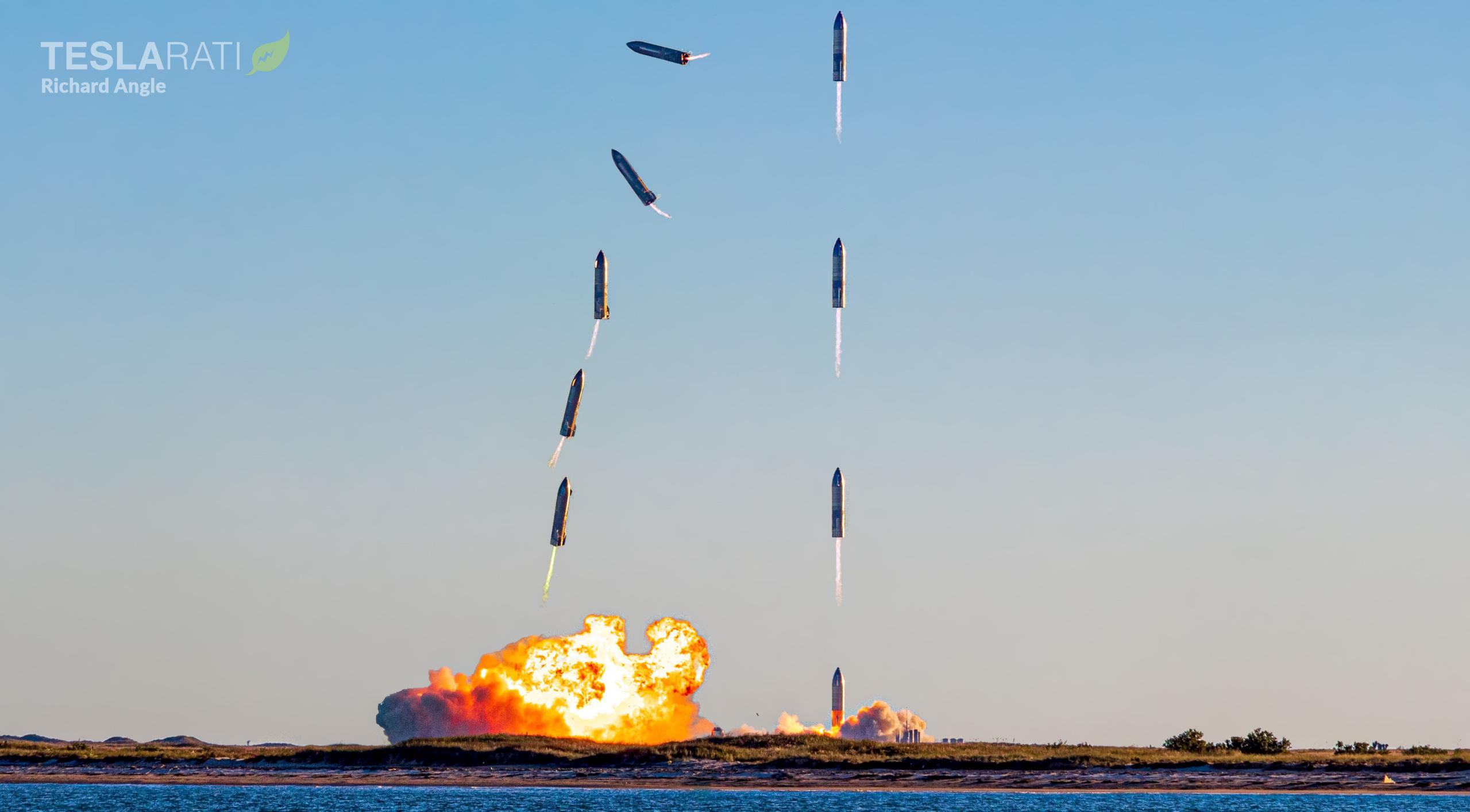

News
Relive SpaceX’s high-altitude Starship launch debut in 4K [video]
SpaceX has published a 4K recap of Starship serial number 8’s (SN8) spectacular high-altitude launch debut, highlighting all crucial aspects of the immensely successful test flight and hinting at the next steps forward.
On December 9th, after days of anticipation and delays for the unprecedented test flight, Starship SN8 sailed through a clean preflight flow, ignited three Raptor engines, and lifted off around 4:45 pm CST – just 15 minutes before the launch window was scheduled to close. In a move that would later be confirmed to be intentional, Starship’s ascent went exactly as planned with all three Raptors sequentially shutting down over the course of almost five minutes – necessary, said Elon Musk, to keep the rocket from “[blowing] through the [12.5-kilometer] altitude limit.”
Although technical difficulties prevented a high-altitude NASA reconnaissance jet from capturing aerial footage of the spectacle from up high, SpaceX certainly seems to have made do with more mundane platforms, capturing all aspects of Starship SN8’s launch in high definition.
At apogee, Starship SN8 vented most of the remaining liquid oxygen in its main tank and shut down the last active Raptor engine, kicking off an unprecedented guided freefall back to Earth. To achieve that feat, Starship SN8 had to reach apogee more or less vertical, begin falling tail-first, activate cold-gas thrusters and actuate four giant flaps to tilt belly-down, and use those same thrusters and flaps to maintain stability.
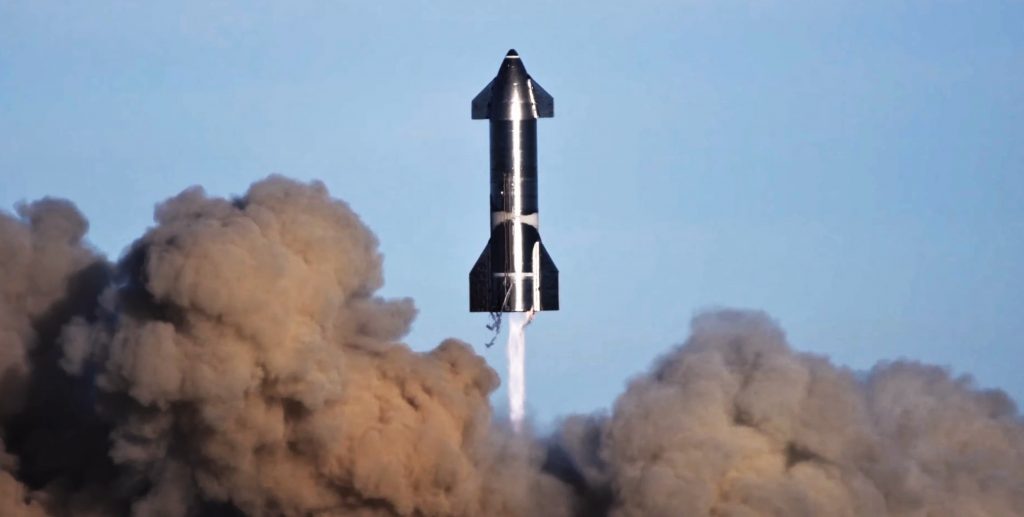
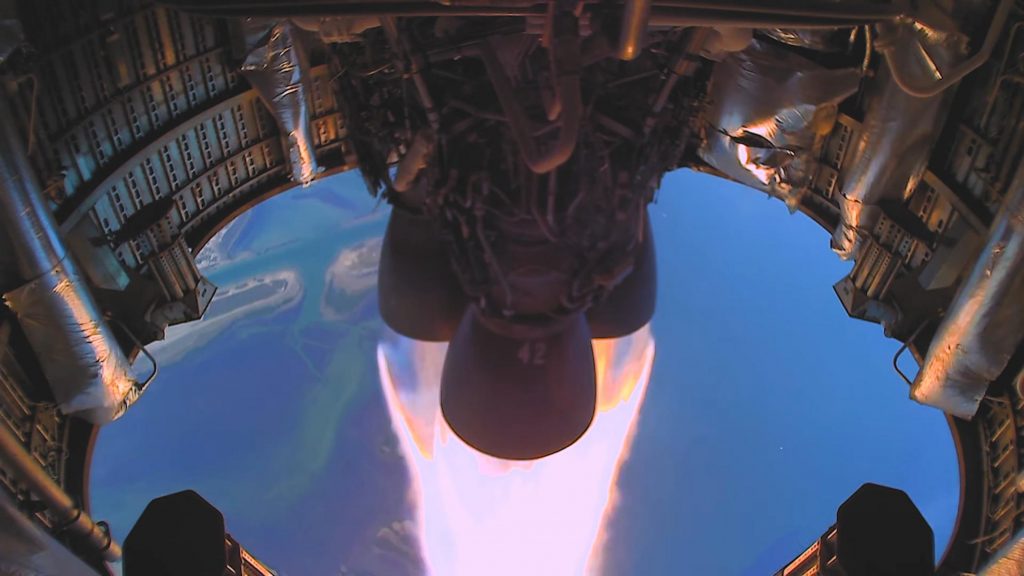
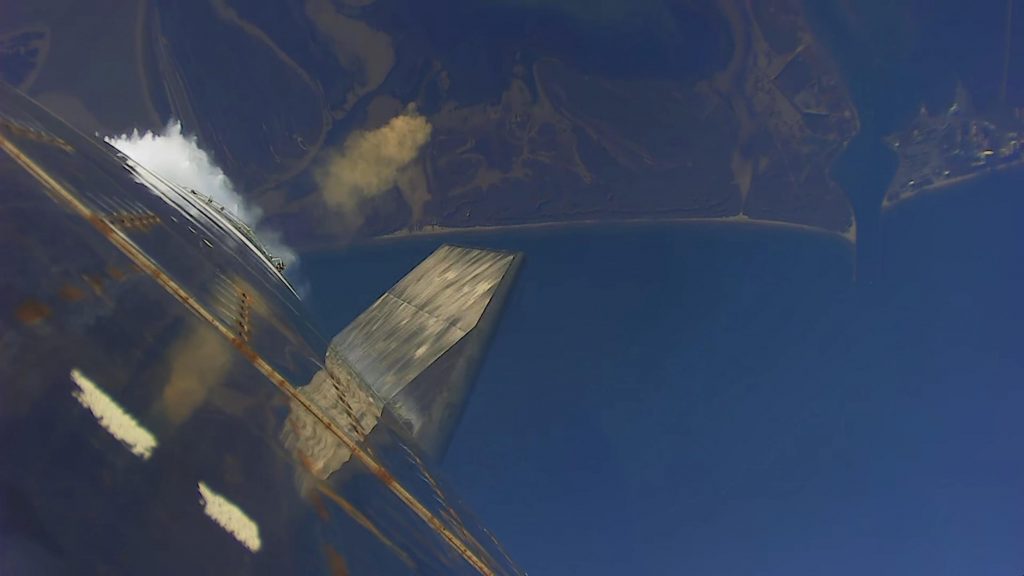
Likely reaching speeds of around 150 m/s (~330 mph) during that freefall, Starship SN8 made it look effortless, twitching its flaps and occasionally using a burst of thrusters to elegantly and stably glide back to about 1 km (~0.6 mi) above the ground. At that point, the rocket ignited one – and then two – Raptor engines with no apparent issue, gimballing violently and firing thrusters to flip its 9m by 50m (30 ft by 165 ft) hull ~120 degrees in a handful of seconds, ending in a tail-down landing configuration.
Up to that point, more than six minutes into the flight test, Starship SN8 had all but aced the gauntlet of firsts SpaceX had thrown at it, notably surpassing CEO Elon Musk’s expectation of a successful ascent but otherwise failed descent.
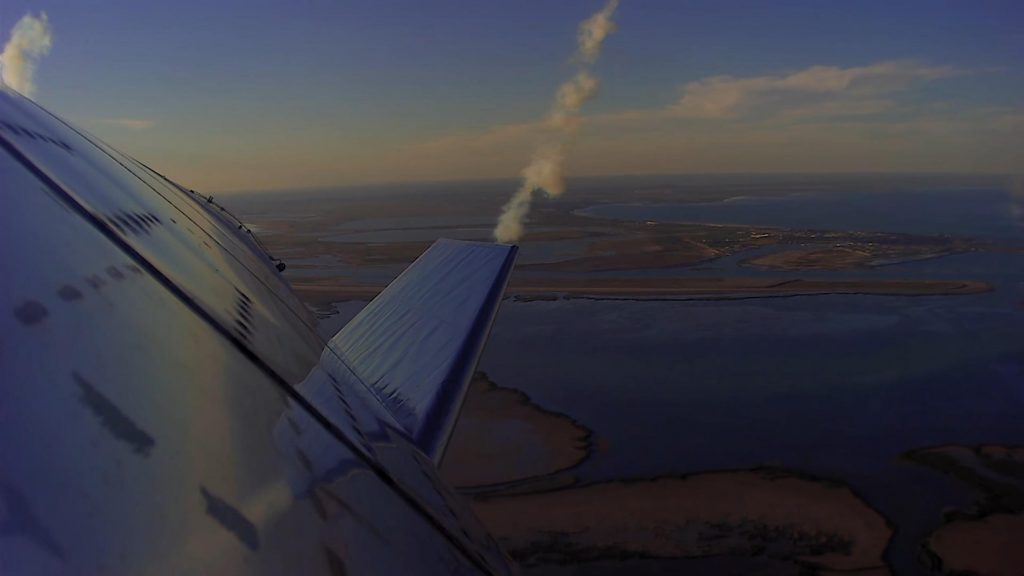
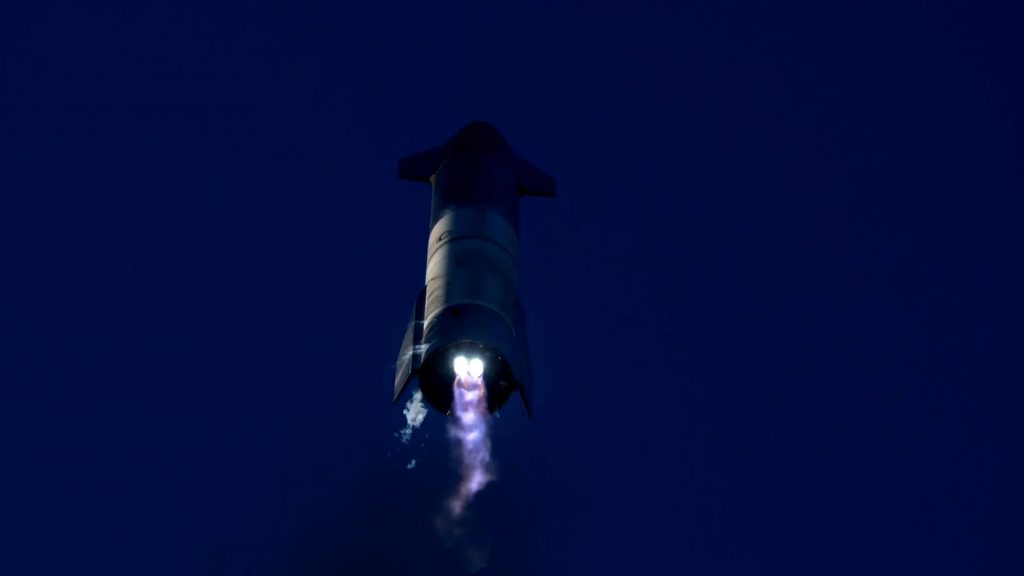
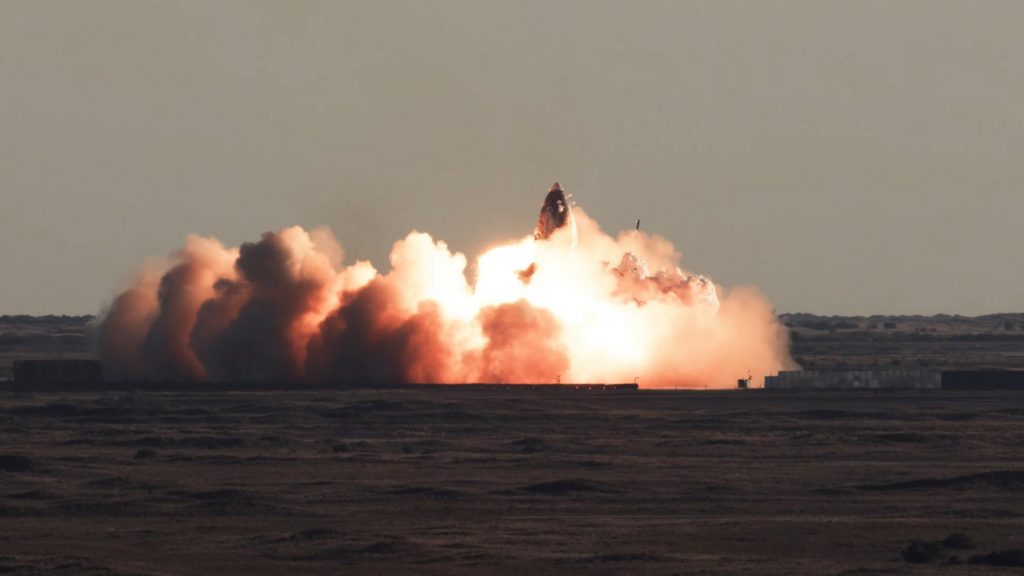
Instead, SN8 made it just a dozen or two seconds away from a soft landing before things went wrong. According to Musk, who commented after the fact, the Starship’s fuel (methane) header tank – a small secondary tank used to store landing propellant at high pressures – began to exhibit lower than needed pressures in the seconds before touchdown. Whether intentional or not, one of the two Raptors ignited during SN8’s flip maneuver shut down around ten seconds later, at which point the lone remaining engine throttled up only to have its plume turn an almost solid green.
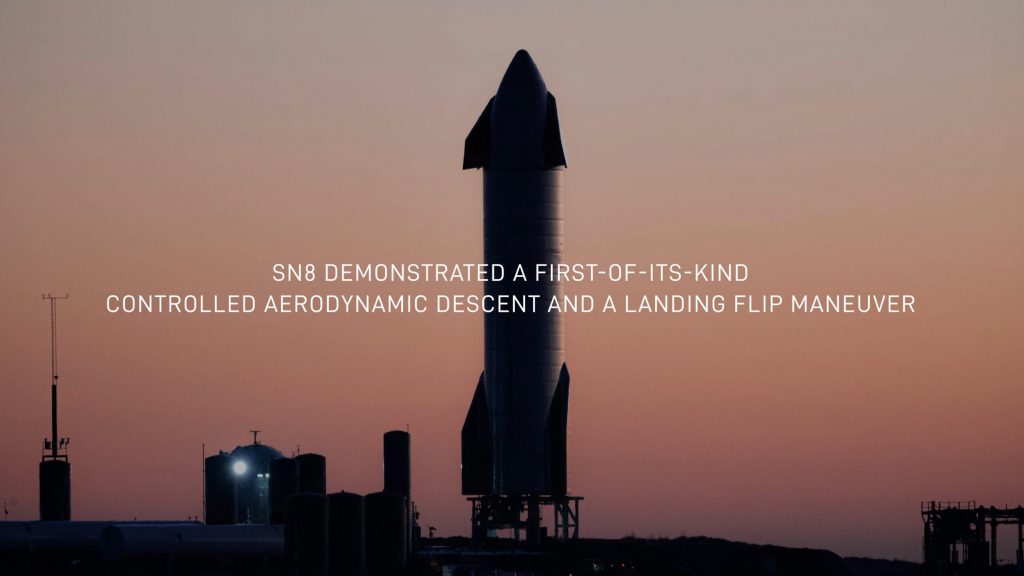
In simple terms, without enough pressure in the fuel header, Raptor’s combustion turned very oxygen-rich, dramatically ramping up the heat and literally melting the engine’s copper-rich combustion chamber liner (hence the green hue). Had that tank been able to maintain pressure, it’s reasonable to assume that SN8 would have stuck a soft landing just like SN5 and SN6 did a few months prior. Thankfully, Musk says the source of the pressure issue was “minor” and, as SpaceX notes at the end of the recap, Starship SN9 is almost ready to carry the torch forward.
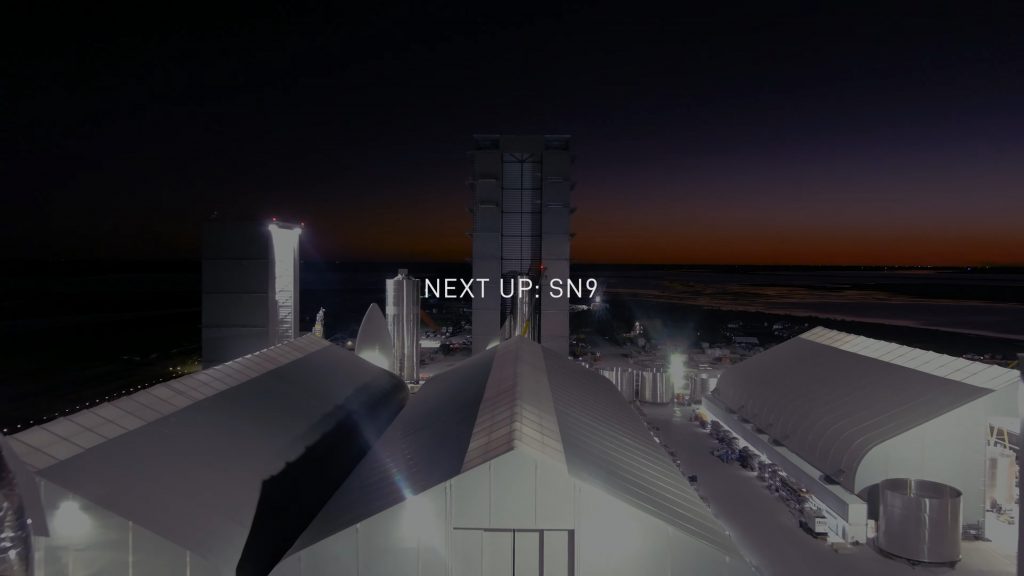
News
Tesla begins Robotaxi certification push in Arizona: report
Tesla seems serious about expanding its Robotaxi service to several states in the coming months.

Tesla has initiated discussions with Arizona transportation regulators to certify its driverless Robotaxi service in the state, as per a recent report from Bloomberg News. The move follows Tesla’s launch of its Robotaxi pilot program in Austin, Texas, as well as CEO Elon Musk’s recent comments about the service’s expansion in the Bay Area.
The Arizona Department of Transportation confirmed to Bloomberg that Tesla has reached out to begin the certification process for autonomous ride-sharing operations in the state. While details remain limited, the outreach suggests that Tesla is serious about expanding its driverless Robotaxi service to several territories in the coming months.
The Arizona development comes as Tesla prepares to expand its service area in Austin this weekend, as per CEO Elon Musk in a post on X. Musk also stated that Tesla is targeting the San Francisco Bay Area as its next major market, with a potential launch “in a month or two,” pending regulatory approvals.
Tesla first launched its autonomous ride-hailing program on June 22 in Austin with a small fleet of Model Y vehicles, accompanied by a Tesla employee in the passenger seat to monitor safety. While still classified as a test, Musk has said the program will expand to about 1,000 vehicles in the coming months. Tesla will later upgrade its Robotaxi fleet with the Cyercab, a two-seater that is designed without a steering wheel.
Sightings of Cybercab castings around the Giga Texas complex suggests that Tesla may be ramping the initial trial production of the self-driving two-seater. Tesla, for its part, has noted in the past that volume production of the Cybercab is expected to start sometime next year.
In California, Tesla has already applied for a transportation charter-party carrier permit from the state’s Public Utilities Commission. The company is reportedly taking a phased approach to operating in California, with the Robotaxi service starting with pre-arranged rides for employees in vehicles with safety drivers.
News
Tesla sets November 6 date for 2025 Annual Shareholder Meeting
The automaker announced the date on Thursday in a Form 8-K.

Tesla has scheduled its 2025 annual shareholder meeting for November 6, addressing investor concerns that the company was nearing a legal deadline to hold the event.
The automaker announced the date on Thursday in a Form 8-K submitted to the United States Securities and Exchange Commission (SEC). The company also listed a new proposal submission deadline of July 31 for items to be included in the proxy statement.
Tesla’s announcement followed calls from a group of 27 shareholders, including the leaders of large public pension funds, which urged Tesla’s board to formally set the meeting date, as noted in a report from The Wall Street Journal.
The group noted that under Texas law, where Tesla is now incorporated, companies must hold annual meetings within 13 months of the last one if requested by shareholders. Tesla’s previous annual shareholder meeting was held on June 13, 2024, which placed the July 13 deadline in focus.
Tesla originally stated in its 2024 annual report that it would file its proxy statement by the end of April. However, an amended filing on April 30 indicated that the Board of Directors had not yet finalized a meeting date, at least at the time.
The April filing also confirmed that Tesla’s board had formed a special committee to evaluate certain matters related to CEO Elon Musk’s compensation plan. Musk’s CEO performance award remains at the center of a lengthy legal dispute in Delaware, Tesla’s former state of incorporation.
Due to the aftermath of Musk’s legal dispute about his compensation plan in Delaware, he has not been paid for his work at Tesla for several years. Musk, for his part, has noted that he is more concerned about his voting stake in Tesla than his actual salary.
At last year’s annual meeting, TSLA shareholders voted to reapprove Elon Musk’s compensation plan and ratified Tesla’s decision to relocate its legal domicile from Delaware to Texas.
Elon Musk
Grok coming to Tesla vehicles next week “at the latest:” Elon Musk
Grok’s rollout to Tesla vehicles is expected to begin next week at the latest.

Elon Musk announced on Thursday that Grok, the large language model developed by his startup xAI, will soon be available in Tesla vehicles. Grok’s rollout to Tesla vehicles is expected to begin next week at the latest, further deepening the ties between the two Elon Musk-led companies.
Tesla–xAI synergy
Musk confirmed the news on X shortly after livestreaming the release of Grok 4, xAI’s latest large language model. “Grok is coming to Tesla vehicles very soon. Next week at the latest,” Musk wrote in a post on social media platform X.
During the livestream, Musk and several members of the xAI team highlighted several upgrades to Grok 4’s voice capabilities and performance metrics, positioning the LLM as competitive with top-tier models from OpenAI and Google.
The in-vehicle integration of Grok marks a new chapter in Tesla’s AI development. While Tesla has long relied on in-house systems for autonomous driving and energy optimization, Grok’s integration would introduce conversational AI directly into its vehicles’ user experience. This integration could potentially improve customer interaction inside Tesla vehicles.
xAI and Tesla’s collaborative footprint
Grok’s upcoming rollout to Tesla vehicles adds to a growing business relationship between Tesla and xAI. Earlier this year, Tesla disclosed that it generated $198.3 million in revenue from commercial, consulting, and support agreements with xAI, as noted in a report from Bloomberg News. A large portion of that amount, however, came from the sale of Megapack energy storage systems to the artificial intelligence startup.
In July 2023, Musk polled X users about whether Tesla should invest $5 billion in xAI. While no formal investment has been made so far, 68% of poll participants voted yes, and Musk has since stated that the idea would be discussed with Tesla’s board.
-

 Elon Musk1 week ago
Elon Musk1 week agoTesla investors will be shocked by Jim Cramer’s latest assessment
-

 Elon Musk19 hours ago
Elon Musk19 hours agoxAI launches Grok 4 with new $300/month SuperGrok Heavy subscription
-

 Elon Musk3 days ago
Elon Musk3 days agoElon Musk confirms Grok 4 launch on July 9 with livestream event
-

 News7 days ago
News7 days agoTesla Model 3 ranks as the safest new car in Europe for 2025, per Euro NCAP tests
-

 Elon Musk2 weeks ago
Elon Musk2 weeks agoA Tesla just delivered itself to a customer autonomously, Elon Musk confirms
-

 Elon Musk1 week ago
Elon Musk1 week agoxAI’s Memphis data center receives air permit despite community criticism
-

 Elon Musk2 weeks ago
Elon Musk2 weeks agoTesla’s Omead Afshar, known as Elon Musk’s right-hand man, leaves company: reports
-

 News2 weeks ago
News2 weeks agoXiaomi CEO congratulates Tesla on first FSD delivery: “We have to continue learning!”

















